- Clone
- 43A3 (See other available formats)
- Regulatory Status
- RUO
- Other Names
- Endoglin
- Isotype
- Mouse IgG1, κ
- Ave. Rating
- Submit a Review
- Product Citations
- publications

-

Human mesenchymal stem cells were stained with CD105 (clone 43A3) PE (filled histogram) or mouse IgG1, κ PE isotype control (open histogram).
| Cat # | Size | Price | Quantity Check Availability | Save | ||
|---|---|---|---|---|---|---|
| 323205 | 25 tests | 98€ | ||||
| 323206 | 100 tests | 215€ | ||||
CD105 is also known as Endoglin. It is a type I integral membrane homodimer protein with subunits of 90 kD found on vascular endothelial cells and syncytiotrophoblasts of placenta. CD105 is weakly expressed on stromal fibroblasts. It is also expressed on activated monocytes and tissue macrophages. Expression of CD105 is increased on activated endothelium in tissues undergoing angiogenesis, such as in tumors, or in cases of wound healing or dermal inflammation. CD105 is a component of the TGF-β receptor system in human umbilical vein endothelial cells and binds TGF-β1 and β3 with high affinity but does not bind to TGF-β2.
Product DetailsProduct Details
- Verified Reactivity
- Human
- Antibody Type
- Monoclonal
- Host Species
- Mouse
- Immunogen
- L-cells transfected with human CD105
- Formulation
- Phosphate-buffered solution, pH 7.2, containing 0.09% sodium azide and BSA (origin USA)
- Preparation
- The antibody was purified by affinity chromatography, and conjugated with PE under optimal conditions.
- Concentration
- Lot-specific (to obtain lot-specific concentration and expiration, please enter the lot number in our Certificate of Analysis online tool.)
- Storage & Handling
- The antibody solution should be stored undiluted between 2°C and 8°C, and protected from prolonged exposure to light. Do not freeze.
- Application
-
FC - Quality tested
- Recommended Usage
-
Each lot of this antibody is quality control tested by immunofluorescent staining with flow cytometric analysis. For flow cytometric staining, the suggested use of this reagent is 5 µl per million cells in 100 µl staining volume or 5 µl per 100 µl of whole blood.
- Excitation Laser
-
Blue Laser (488 nm)
Green Laser (532 nm)/Yellow-Green Laser (561 nm)
- Application References
- Product Citations
-
- RRID
-
AB_755957 (BioLegend Cat. No. 323205)
AB_755958 (BioLegend Cat. No. 323206)
Antigen Details
- Structure
- Associates with TGF-ß receptor I and II, homodimeric type I integral membrane protein, 90 kD
- Distribution
-
Endothelial cells, activated monocytes/macrophages, bone marrow stromal cells, hematopoietic stem/progenitor cells
- Function
- Modulates cellular response to TGF-ß, involved in vascular development and remodelling
- Ligand/Receptor
- TGF-ß1, TGF-ß3
- Cell Type
- Endothelial cells, Hematopoietic stem and progenitors, Macrophages, Mesenchymal Stem Cells, Monocytes
- Biology Area
- Angiogenesis, Cell Biology, Immunology, Stem Cells
- Molecular Family
- Adhesion Molecules, CD Molecules
- Antigen References
-
1. Mason D, et al. Eds. 2002. Leucocyte Typing VII. Oxford University Press. New York.
2. Pierelli L, et al. 2001. Leuk. Lymphoma 42:1195. - Gene ID
- 2022 View all products for this Gene ID
- UniProt
- View information about CD105 on UniProt.org
Related FAQs
- What type of PE do you use in your conjugates?
- We use R-PE in our conjugates.
Other Formats
View All CD105 Reagents Request Custom Conjugation| Description | Clone | Applications |
|---|---|---|
| Purified anti-human CD105 | 43A3 | FC |
| FITC anti-human CD105 | 43A3 | FC |
| PE anti-human CD105 | 43A3 | FC |
| APC anti-human CD105 | 43A3 | FC |
| Alexa Fluor® 488 anti-human CD105 | 43A3 | FC |
| Alexa Fluor® 647 anti-human CD105 | 43A3 | FC |
| Biotin anti-human CD105 | 43A3 | FC |
| PerCP/Cyanine5.5 anti-human CD105 | 43A3 | FC |
| PE/Cyanine7 anti-human CD105 | 43A3 | FC |
| Brilliant Violet 421™ anti-human CD105 | 43A3 | FC |
| TotalSeq™-A0068 anti-human CD105 | 43A3 | PG |
| PE/Dazzle™ 594 anti-human CD105 | 43A3 | FC |
| TotalSeq™-C0068 anti-human CD105 | 43A3 | PG |
| TotalSeq™-B0068 anti-human CD105 | 43A3 | PG |
| APC/Fire™ 750 anti-human CD105 Antibody | 43A3 | FC |
| TotalSeq™-D0068 anti-human CD105 | 43A3 | PG |
Customers Also Purchased
Compare Data Across All Formats
This data display is provided for general comparisons between formats.
Your actual data may vary due to variations in samples, target cells, instruments and their settings, staining conditions, and other factors.
If you need assistance with selecting the best format contact our expert technical support team.
-
Purified anti-human CD105
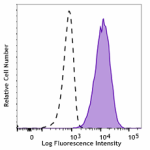
Human monocytic cell line THP-1 stained with purified 43A3, ... -
FITC anti-human CD105
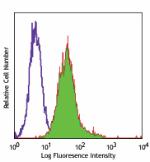
Human monocytic cell line THP-1 stained with 43A3 FITC -
PE anti-human CD105
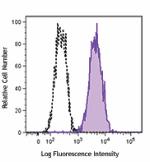
Human mesenchymal stem cells were stained with CD105 (clone ... -
APC anti-human CD105
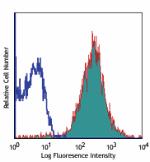
Human monocytic cell line THP-1 stained with 43A3 APC -
Alexa Fluor® 488 anti-human CD105
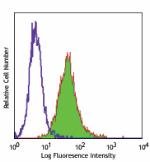
Human monocytic cell line THP-1 stained with 43A3 Alexa Fluo... -
Alexa Fluor® 647 anti-human CD105
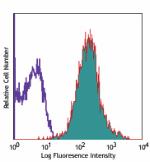
Human monocytic cell line THP-1 stained with 43A3 Alexa Fluo... -
Biotin anti-human CD105
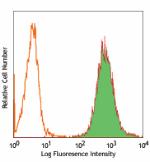
Human monocytic cell line THP-1 stained with biotinylated 43... -
PerCP/Cyanine5.5 anti-human CD105
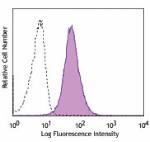
Human monocytic cell line, THP-1, was stained with CD105 (Cl... -
PE/Cyanine7 anti-human CD105
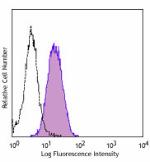
Human monocytic cell line (THP-1) stained with CD105 (clone ... -
Brilliant Violet 421™ anti-human CD105

Human leukemic monocyte cell line THP-1 was stained with CD1... -
TotalSeq™-A0068 anti-human CD105
-
PE/Dazzle™ 594 anti-human CD105
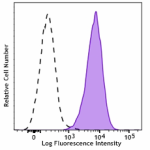
Human monocytic cell line THP-1 was stained with CD105 (clon... -
TotalSeq™-C0068 anti-human CD105
-
TotalSeq™-B0068 anti-human CD105
-
APC/Fire™ 750 anti-human CD105 Antibody
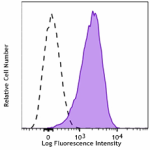
Human monocytic cell line THP-1 was stained with CD105 (clon... -
TotalSeq™-D0068 anti-human CD105
 Login / Register
Login / Register 










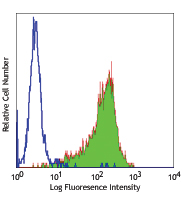
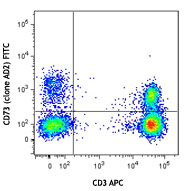
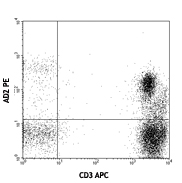
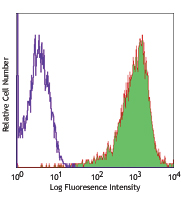



Follow Us